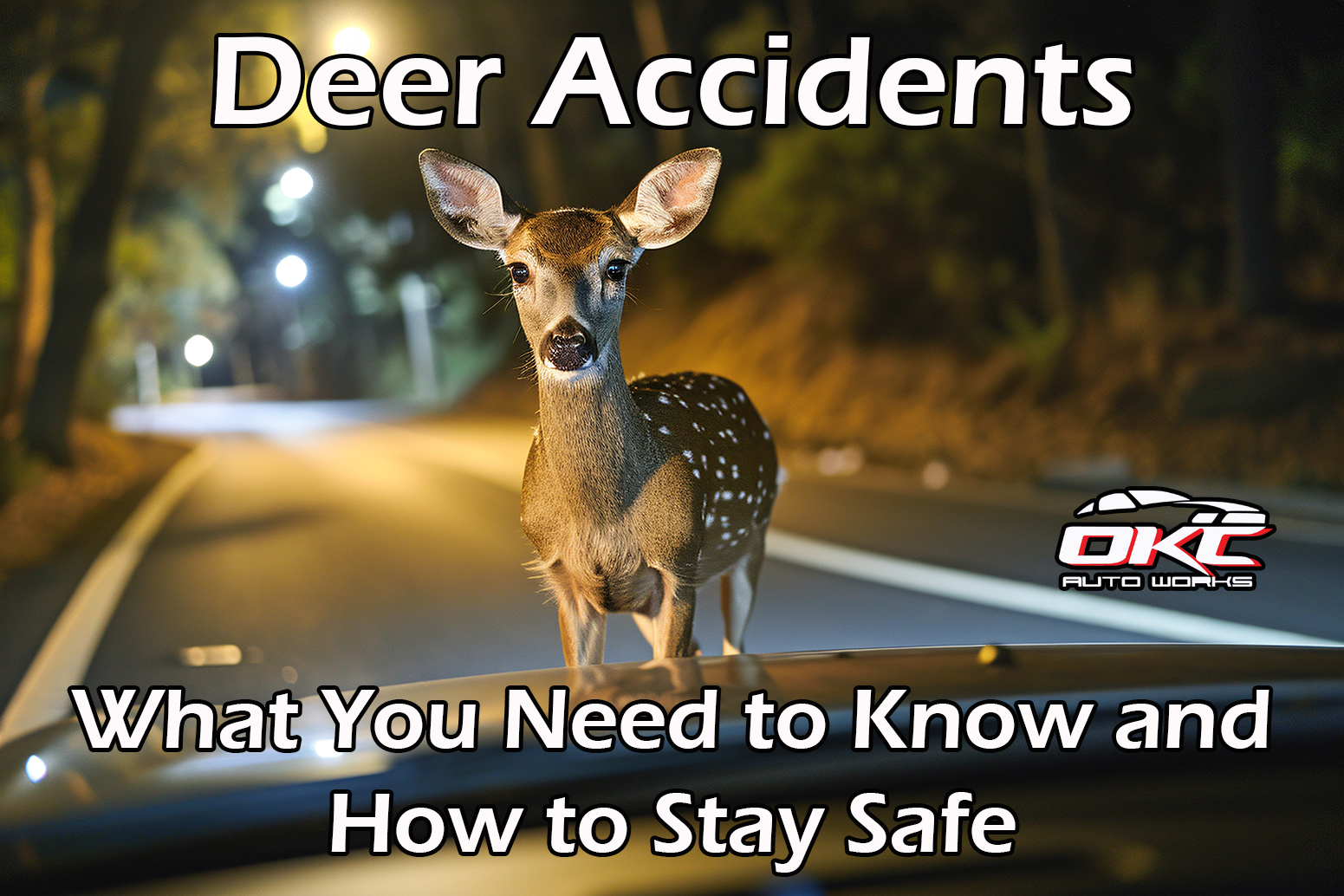Deer accidents are unfortunately a common occurrence for drivers, especially during the fall and early winter months. In fact, autumn is peak season for wildlife collisions, and deer are the primary culprits. According to the Insurance Institute for Highway Safety (IIHS), the fall months account for a significant portion of animal-related accidents, and these collisions can cause severe damage to vehicles, and even result in injuries or fatalities for both drivers and passengers.
So, why do deer accidents spike this time of year, and what can you do to minimize the risk of hitting a deer on the road? Here’s everything you need to know about deer accidents and how to stay safe behind the wheel.
Why Deer Accidents Increase in the Fall
There are several reasons why deer accidents increase during the fall and early winter:
- Deer Mating Season (Rutting Season): The primary factor contributing to the rise in deer-related accidents in the fall is the rut, which is the mating season for deer. Male deer (bucks) become much more active during this time as they search for mates. This increased activity causes them to move across roadways more frequently, especially during dawn and dusk when visibility is lower.
- Shorter Days and Reduced Visibility: As the days grow shorter and the sun sets earlier, the risk of encountering deer on the roads increases. Deer are crepuscular animals, meaning they are most active during twilight hours—dawn and dusk. Low light conditions make it harder for drivers to see deer crossing the road in time to react.
- Food Scarcity: In the fall, deer are often foraging for food to prepare for winter. This causes them to travel long distances in search of food sources, which can bring them closer to roadways and increase the likelihood of accidents.
- Migration: In some areas, deer may be migrating to areas with more favorable conditions for the winter months. These migrations can cause groups of deer to cross highways in large numbers, making a collision more likely.
How to Avoid Deer Accidents
While it’s impossible to eliminate all risk of a deer collision, there are several proactive steps you can take to reduce the likelihood of hitting a deer:
- Stay Alert During Peak Times: Be particularly cautious during dawn and dusk, which are the most active times for deer. If you’re driving in areas known for deer crossings, reduce your speed during these times and remain extra vigilant for movement along the roadside.
- Use Your High Beams When Possible: When driving at night or in low visibility conditions, use your high beams whenever possible to improve your chances of seeing deer before it’s too late. However, always dim your high beams when approaching other vehicles.
- Watch for Deer Crossing Signs: If you’re driving in rural or wooded areas, be on the lookout for deer crossing signs. These indicate that deer are likely to be present in the area and can serve as a reminder to stay alert and drive cautiously.
- Slow Down in Deer-Prone Areas: Reduce your speed in areas with heavy deer populations or near forests, farms, or other places where deer are commonly found. Slower speeds give you more time to react if a deer suddenly appears on the road.
- Look for Reflection Eyes: When driving at night, the reflection of a deer’s eyes can often be seen from a distance. If you spot the reflection of two glowing spots in the road ahead, slow down immediately and be prepared to stop.
- Use Extra Caution in the Fall and Winter: Deer accidents are more frequent from October to December, so take extra precautions during these months. Be aware of seasonal trends and adjust your driving habits accordingly.
What to Do If You Hit a Deer
Despite your best efforts, deer accidents can still happen. If you find yourself in a situation where you cannot avoid a deer or you have already hit one, here’s what you should do:
- Stay Calm and Assess the Situation: If you’ve hit a deer, the first thing to do is remain calm. Move your vehicle to a safe location if possible, and turn on your hazard lights to alert other drivers.
- Call 911: It’s important to report the accident, especially if the deer is still alive or blocking traffic. Local authorities will respond to ensure the safety of both you and other drivers. In some cases, wildlife officers or animal control may be called to deal with the deer.
- Check for Injuries: Assess yourself and any passengers for injuries. If anyone is injured, call for medical assistance immediately.
- Avoid Approaching the Deer: If the deer is alive but injured, avoid getting too close. An injured deer can be very dangerous and may lash out. Wild animals are unpredictable, and approaching them may put you in harm’s way.
- Document the Scene: Take photos of the scene, including any damage to your vehicle and the location of the accident. This will be helpful for insurance purposes and filing a claim.
- Notify Your Insurance Company: Contact your insurance company as soon as possible to report the accident. Many insurance policies cover deer collisions under comprehensive coverage, but it’s important to confirm with your insurer.
Conclusion
Deer accidents are a serious hazard, especially during the fall months when deer are more active. By staying alert, driving cautiously, and following the steps outlined above, you can minimize your risk of a collision. If an accident does occur, knowing what to do and how to stay safe can help you handle the situation with confidence and avoid further complications.

